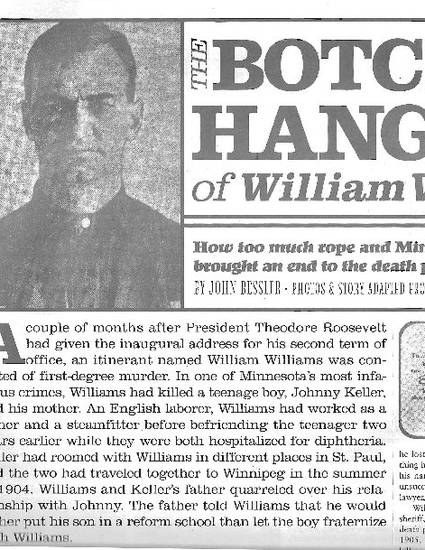
This article describes Minnesota's last state-sanctioned execution: that of William Williams, who was hanged in 1906 in the basement of the Ramsey County Jail. Convicted of killing a teenage boy, Williams was tried on murder charges in 1905 and was put to death in February of the following year. Because the county sheriff miscalculated the length of the rope, the hanging was botched, with Williams hitting the floor when the trap door was opened. Three deputies, standing on the scaffold, thereafter seized the rope and forcibly pulled it up until Williams - fourteen and half minutes later - died by strangulation. The article also recounts how Minnesota newspapers were prosecuted under Minnesota's "midnight assassination law" after printing details of the execution. That law, also dubbed the "John Day Smith law" after its legislative author, required private, nighttime executions and forbade newspaper reporters from attending executions. The law further stipulated that "no account of the details" of an execution, except that "such convict was on the day in question duly executed," could be published. The author discusses the history of the William Williams case and how, in the wake of the bungled execution, the Minnesota Legislature voted to abolish capital punishment in 1911.
